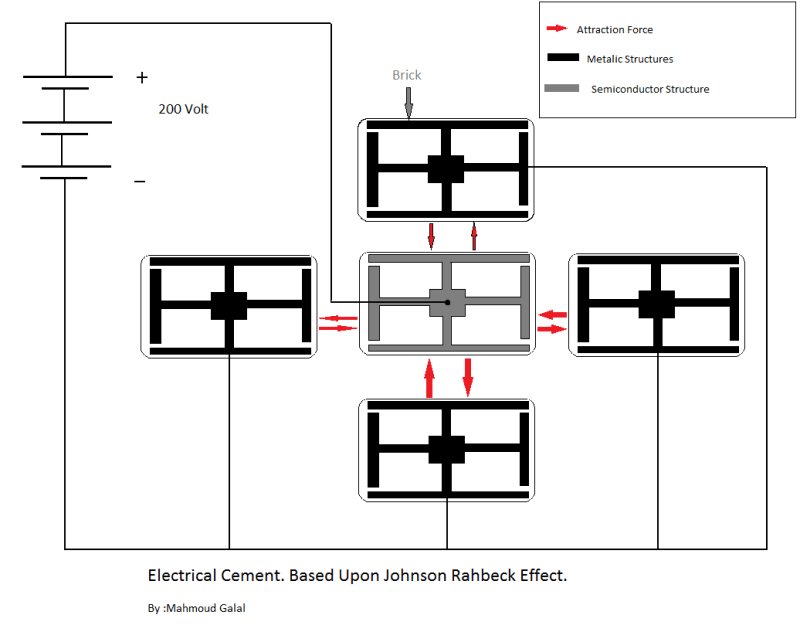Cement is a major and important component in the building processes, but as we know the manufacturing process of it is associated with harmful effects to the evironment and to the workers in this field, so an environment-friendly replacement is a must. Electrical Cement introduces a new methodology. The concept behind it is very simple. It replaces the chemical cohesion force between bricks, provided by cement, by an electrical attraction force to hold the bricks together.
The concept relies upon a well known physical effect called the "Johnson-Rahbeck effect" discovered in 1920. The effect is simply a large force of attraction between a metalic surface and a semiconductor when an electric potential (about 200 volt) is applied across them. According to this effect, if we can design building bricks equipped with metalic structure and another with semiconductor structure like the ones in the figure and applying an electric potential on them we will produce a very big force of attraction between them that overcomes the one produced by cement.
This design provides alot of benefits. First ,it replaces regular cement with a more environment-friendly solution. Second, it provides the ability of recycled building, as you can destroy all building by just removing the electrical potential applied to the bricks and reuse these bricks in another building process. Third, this mechanism doesn't consume power as the current passed through the bricks is very low so will be the consumed electrical power.
Like this entry?
-
About the Entrant
- Name:Mahmoud Galal
- Type of entry:individual
- Software used for this entry:TurboCAD
- Patent status:none

